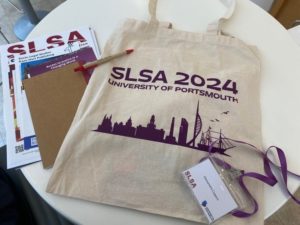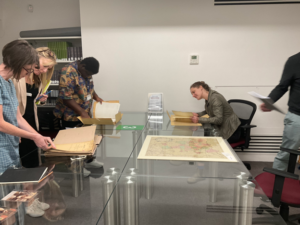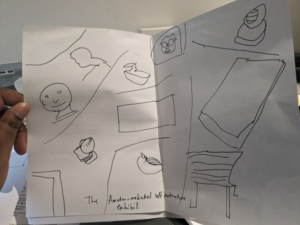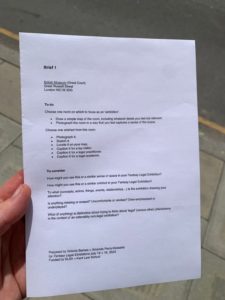post by Charlotte Lenton (2019 cohort)
UK Research and Innovation (UKRI) offer a competitive policy internship scheme for doctoral students to embed themselves in real-world policy organisations for three months. Throughout my PhD I have become increasingly interested in how to integrate policy impact into my work. In February 2023 I participated in the first ever iteration of the Get Engaged with Policy short course hosted by the Researcher Academy at the University of Nottingham. Applying to the UKRI-funded internship scheme was the logical next step for me to develop my skills in producing impactful policy-related research and gaining a better understanding of how this works in practice.
There are lots of organisations to choose from when applying to the policy internship scheme. I selected parliamentary organisations as my first choice because I wanted to be as close to the beating heart of policymaking in the UK as possible. A week after a 40-minute online interview with a panel of three policy researchers from different parliamentary organisations, I received my internship offer from Senedd Research at the Welsh Parliament (Senedd Cymru). Just seven weeks later I was walking through the doors of the Ty Hywel building for the first time to start my placement!

My first week
In my opinion, there’s no point in pretending to know things you don’t know. So, during the first meeting with my new line manager at Senedd Research, I decided to get the truth out in the open as soon as possible. I admitted to her that I had no idea what devolution was, and I knew very little about the role of the Welsh Parliament. Risky, I know. But in fact, laying my cards on the table in this way actually really helped with setting their expectations of what I knew (or in my case didn’t know) about policy and the parliament, as well as tailoring induction and training sessions to ensure I got the most out of the experience.
Over the course of the first week in the office, I had lots of induction and training sessions to learn about the role of Senedd Research within the Welsh Parliament. I also started meeting colleagues from the Environment and Transport research team which I was a part of, as well as colleagues from other parts of the service. I was slightly nervous about how I would be received in the team as I know they have quite a few interns coming and going throughout the year, but everyone was so lovely, friendly, and welcoming.
In addition to producing briefing papers, Senedd Research also supports parliamentary committees, writes short research articles for the website, and helps members to support their constituents with a whole range of issues. As a research assistant, I would be supporting the team with all of these tasks. In the spirit of starting as you mean to go on, I was allocated an enquiry to start some research at the end of my first day.
What’s free-range eggs got to do with anything?!
The role of a parliamentary researcher is super varied. One minute you could be preparing a briefing paper for a committee inquiry but then an urgent enquiry comes through from a Member of the Senedd (MS) that needs actioning so you’re suddenly working on something totally different.
Each team within Senedd Research specialise in particular policy areas. My PhD is related to rail transport, so it made perfect sense to be placed in the Environment and Transport team. While I spent a large proportion of my time working on a policy briefing about the Welsh rail network, I also supported the team with answering both transport and environment MS enquiries.
My first enquiry was related to marketing of free-range eggs. At the time this seemed very bizarre to me. Why would anyone be concerned about free-range eggs? Turns out there’s a lot going on with marketing regulations of free-range eggs in the EU, Scotland, and England. But not so much in Wales. Which is where concerns about competition and standards began to arise.
Fast-forward to week eight of my internship, I am sitting in the presence of members of the Economy, Trade, and Rural Affairs Committee conducting a general scrutiny session of the Welsh Government Minister having contributed to the briefing paper in my new specialist subject… free-range egg regulations!! I had to condense a lot of information into a maximum of one page and also write some suggested questions the committee might like to ask the Minister in relation to this. Being in the room when Llyr Gruffydd MS asked the Minister about this issue was one of the highlights of the whole internship for me. You can even watch my suggested questions being asked in session by clicking here.

Getting my research on the agenda
Writing for this audience is a very important skill I developed during my time at Senedd Research. Writing in the Senedd Research ‘style’ was a particular challenge for me as sentences need to be short, direct, and to the point which is not something we do that well in academia if I’m honest. Vast quantities of information, facts, and statistics also need condensing into just one or two sentences.
From the beginning of the internship, I was encouraged by my line manager and the team leader to be proactive with seeking out topics of interest for research articles. I have research interests in transport and accessibility, so naturally I started seeking out opportunities to write about these topics.
Over the course of the twelve weeks, I managed to publish three short articles for the website as well as one long policy briefing paper which is published online and in print format. All of these have direct connections to Welsh Government policies and strategies which are helpful for Senedd members during scrutiny sessions. I am particularly proud of my article about accessible tourism in Wales as this was not necessarily on the agenda of the parliamentarians before and hadn’t really been covered in other work by the team at Senedd Research.
It’s a no-brainer if you’re interested in policy
For me, the internship has probably been the highlight of my PhD to date. Regardless of whether you’re considering a career in academia, industry, or policy I would highly recommend undertaking this internship. I learnt so many valuable skills in such a short time which will be really useful going forward.
You can read my other research articles about digital exclusion in public transport and mobility-as-a-service by clicking the links.





























